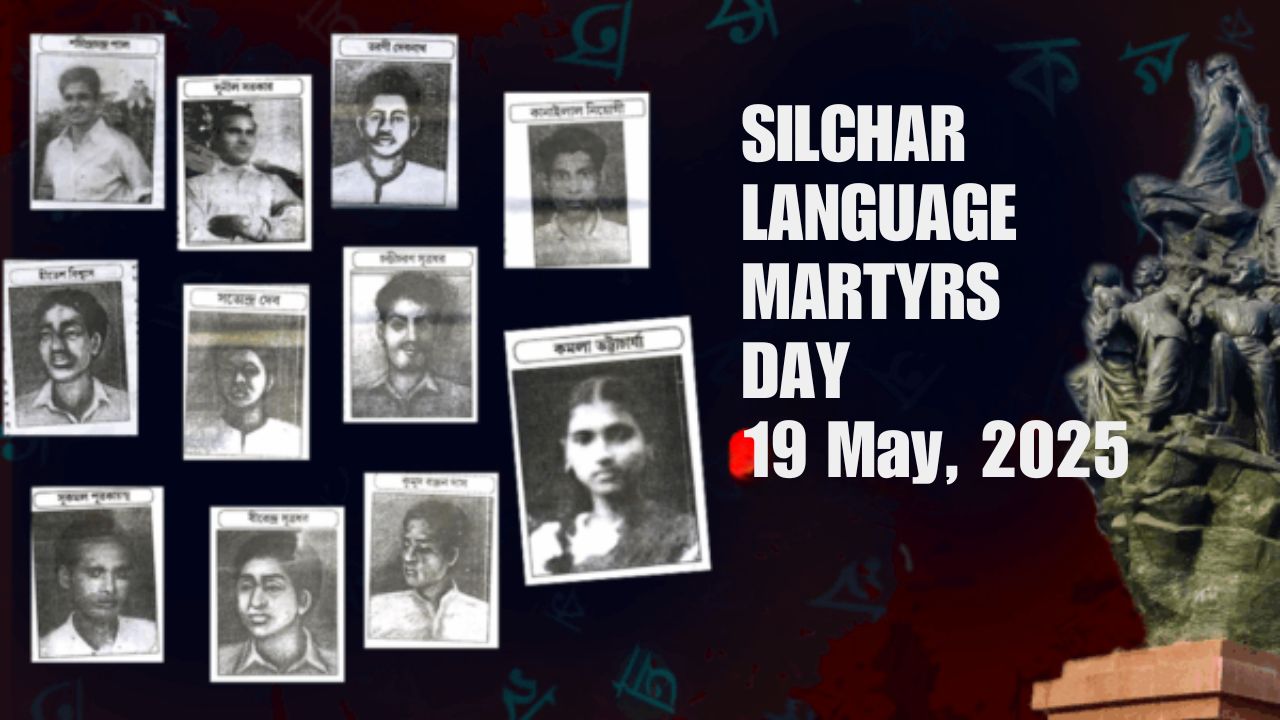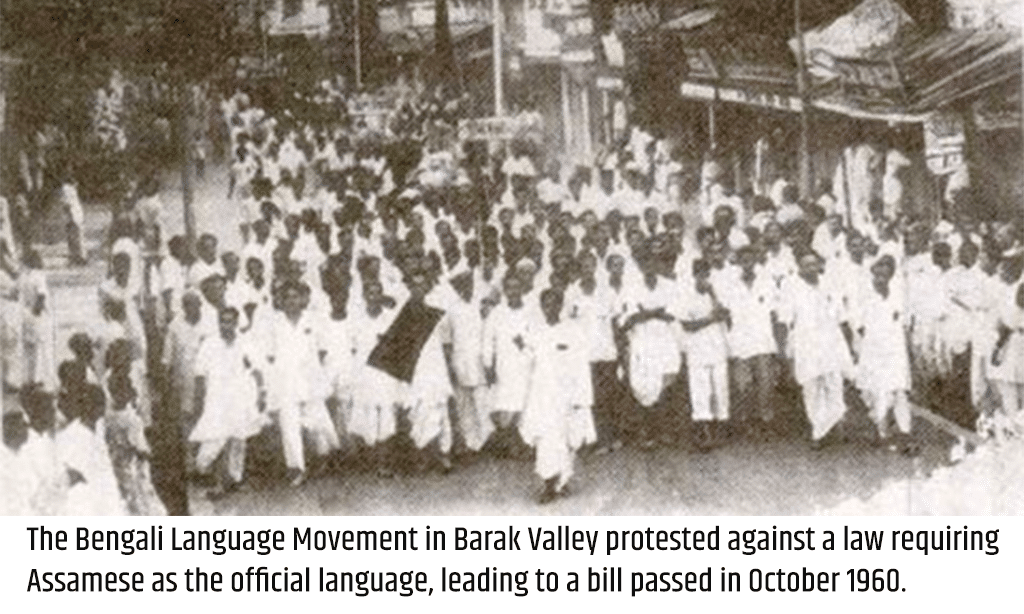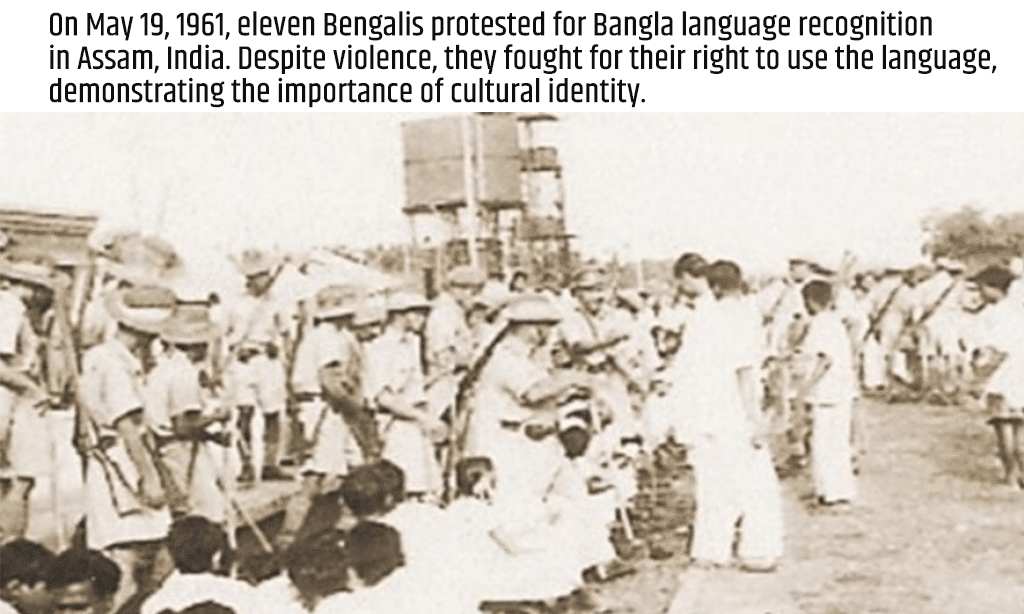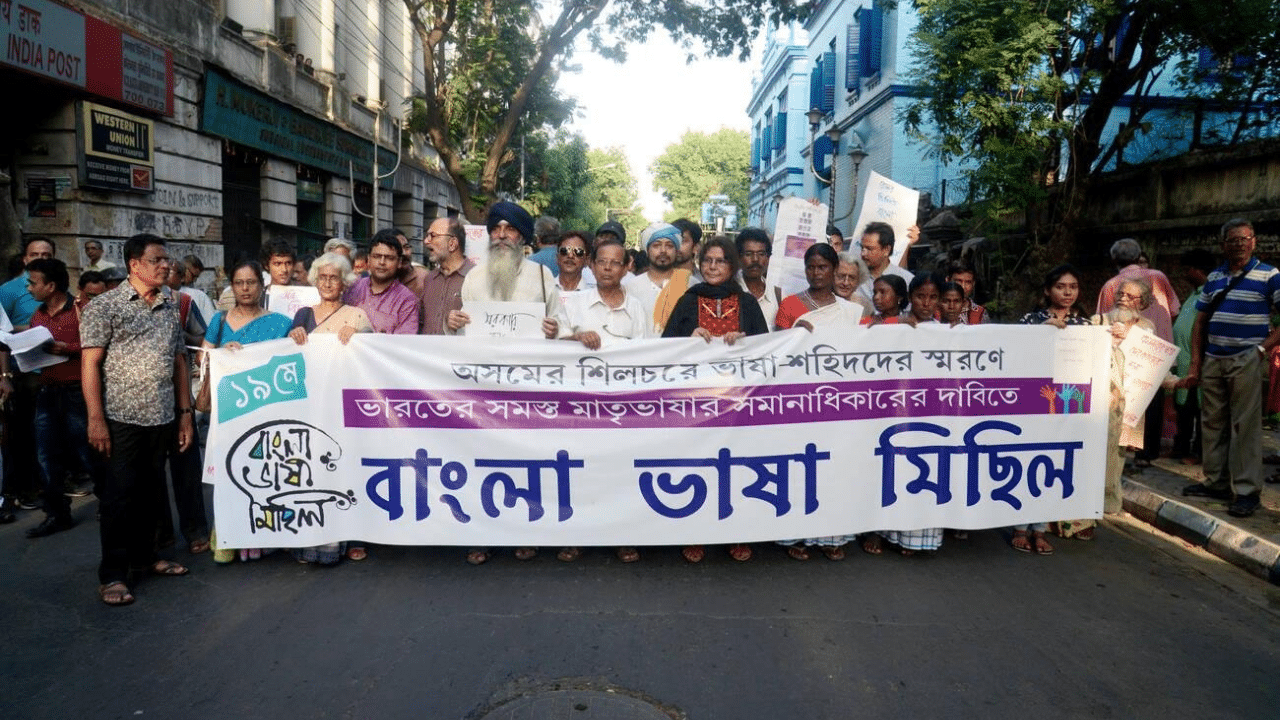Many people struggle to recall the heroes who fought hard for the right to speak their own language. Silchar Language Martyrs Day honors these unsung champions. On May 19, 1961, in Barak Valley, Assam, police shot at protestors. They wanted Bengali as an official language.
Eleven brave souls died that day. Today is May 19, 2025, which marks the 64th anniversary of the Bengali Language Movement in Barak Valley. This article explains the historical event and its effect on language rights. Experts have studied these events closely.
You will read about the movement’s background, the key figures involved, and how present efforts protect linguistic heritage.
This tribute brings awareness to a cause worth knowing—read on for inspiration from past struggles for language rights.
Background of the Bengali Language Movement in Barak Valley
The movement began because a law declared Assamese as the sole official language in Assam. Up to 80% of people in Barak Valley were ethnic Bengalis. They came from both Hindu and Muslim communities. They opposed the new law and took to the streets. A key moment came in April 1960.
A proposal surfaced at an Assam Pradesh Congress Committee meeting. On October 10, 1960, the government presented a bill, which passed on October 24. This spurred the people to fight harder for their language rights.
The Events Leading Up to Silchar Language Martyrs Day
Silchar Language Martyrs Day marks a key moment in India’s history. It recalls the struggle for language rights in Assam’s Barak Valley.
- Cachar Gana Sangram Parishad was formed on February 5, 1961.
- The group demanded Bengali as an official language in Bengali-speaking areas.
- Tensions rose as the government pushed Assamese in schools and offices.
- Protest leaders were arrested on May 18, 1961, which increased anger and sorrow.
- A large protest gathered on May 19 at Silchar railway station.
- People from places such as Karimganj and Hailakandi joined the march.
- They united to support Bengali rights.
- The government persisted with its stance on Assamese.
- Many felt their identity was at risk.
- Early on May 19, protestors met at Tarapur railway station, ready to demand their rights.
These moments set the stage for a historic clash between protestors and authorities. The timeline offers lessons to new generations about the strength of unity.
The Main Incident of May 19, 1961
On May 19, 1961, at Silchar railway station, a tragic event unfolded. Eleven ethnic Bengalis rallied in support of the Bangla language. They joined a larger group that wanted Bengali to share official status with Assamese. During the peaceful protest, violence erupted.
A Bedford truck roared near the crowd, heightening the tension. The Assam police fired on the crowd, and eleven people lost their lives. This day stands as a turning point in the fight for respect and identity. The protestors faced gunfire with courage and unity.
Impact and Aftermath of the Protests
The protests led to major changes in policies. The Assam government withdrew the circular that sparked the conflict. Official policies shifted when Section 5 of Assam Act XVIII, 1961 granted Bengali an official status. Lal Bahadur Shastri played a significant role.
He helped restore Bengali’s status in Cachar on September 9. A law was enforced to secure Bengali for daily use. The government’s response had a wide effect on local society.
The Legacy of the Language Martyrs
The legacy of the martyrs goes beyond a single date or event. It reminds us of the power held by the people’s voice. Every May 19, we honor the 11 brave souls who gave everything to protect the Bengali language. The celebration has grown into India’s own Mother Language observance.
Shahid Minar and Kamala Bhattacharya’s bronze bust in Silchar stand as lasting tributes to these heroes. Their actions paved the way for greater recognition of linguistic diversity across India. The movement shaped cultural identity and strengthened community bonds.
Communities celebrate through memorials, school programs, and cultural events. Their story inspires younger generations to stand up for their rights. This living memory teaches us the value of unity and determination.
List of Martyrs
In 1961, eleven people died as martyrs. Nine of them sacrificed their lives on May 19, 1961, and two died later.
The names of these martyrs are:
- Kanailal Niyogi
- Chandicharan Sutradhar
- Hitesh Biswas
- Satyendra Deb
- Kumud Ranjan Das
- Sunil Sarkar
- Tarani Debnath
- Sachindra Chandra Pal
- Birendra Sutradhar
- Sukamal Purakayastha
- Kamala Bhattacharya
One more person, Bijan Chakraborty, was killed on August 17, 1972.
In 1986, two more lost their lives:
- Jaganmay Deb
- Dibyendu Das
The military also beat many protestors during the 1961 movement. Many suffered bullet wounds. At least 30 were taken to Silchar Civil Hospital. Some carried pain for the rest of their lives. Local organizations and writers honor these survivors alongside the 11 martyrs.
The names of these heroes include
- Pradip Kumar Dutta
- Krishna Kanta Biswas
- Manik Miya Laskar
- Nishitendra Narayan Thakur
- Santosh Chandra Kirtoniya
- Bhupendra Kumar Paul
- Sita Dey
- Monoranjan Sarkar
- Anjali Rani Deb
Insights on Silchar Language Martyrs Day
Silchar Language Martyrs Day is more than a date on the calendar. It shows respect through statues and yearly events. People keep the martyrs’ memory alive with deep care. The observance has grown to include debates on language rights and cultural identity.
Memorials and Tributes
In Silchar, a tomb called Shahid Minar stands tall. It honors those who lost their lives in the language movement. A bronze bust of Kamala Bhattacharya, unveiled in 2011, honors her bold stand.
Yearly memorials gather families and communities. Visitors offer flowers and pay their respects. A nearby crematorium also serves as a quiet place of remembrance. Ceremonies bring everyone together to mark the legacy of the martyrs.
Annual Commemorations and Celebrations
Every May 19, towns like Silchar hold Bhasha Shahid Divas. The day honors those who fought for Bengali in Barak Valley. Folk events and cultural displays mark the occasion.
- Communities march together to honor the martyrs.
- Cultural programs feature Bengali music, dance, and poetry. They showcase the region’s rich traditions.
- Streets and homes light up in bright colors near historic sites.
- Schools hold lessons on the events of May 19, 1961. Young minds learn about their heritage.
- Families visit memorials and lay flowers in respect.
- Local leaders give speeches on the importance of language rights.
- Community figures place wreaths at spots like the Silchar railway station.
- Newspaper articles and social media share stories of figures like Rathindranath Sen and Birendra Sutradhar.
- Local accounts from eyewitnesses keep the history alive.
- Debates and discussions in schools help connect past events with today’s issues.
These events bring communities together and pass down the spirit of the movement.
Honoring the Heroes: Personal Stories and Accounts
Stories of Atul Chandra Ghosh, Bhabini Mahato, and Labanya Prabha Ghosh brighten these pages of history. Their tales show grit in the face of hardship. Atul led the protest with firm resolve. Bhabini became a symbol of strength in her community.
Labanya proved that no age or gender can dim courage. Personal accounts of heroes like Kamala Bhattacharya reveal deep sacrifices. These stories keep the memory of bravery alive in everyday conversations.
The Role of Education and Awareness
Teaching about Silchar Language Martyrs Day highlights the need to protect language rights. Schools in Silchar, Hailakandi, and other towns play a key role. They host events and discussions that explain why this day matters. Stories of heroism and events help students grasp past struggles.
Social media campaigns remind everyone of the unrest that once shook Barak Valley. The Assam Language Learning Act, 2020, supports these educational efforts.
Continuing the Legacy: Modern-Day Efforts and Initiatives
Many efforts today keep the martyrs’ memory alive. The 10th Indo-Bangla Cross-Border International Cycle Rally is one such event. Cyclists ride across borders to honor those who fought. This act keeps the story alive in many hearts.
Assam’s Chief Minister, Himanta Biswa Sarma, paid tribute on May 19, 2023. His gesture sparked talks about protecting cultural traditions. Modern groups and local clubs also work to keep language rights in public view.
Government Recognition and Global Perspectives
In 2023, Assam leaders publicly honored the martyrs. The Chief Minister spoke at a tribute event and highlighted the sacrifice of these heroes. The ceremonies brought renewed focus on language rights. This recognition has bolstered calls for greater respect for minority languages.
Cultural groups now push for global notice of the movement. They want the international community to appreciate the struggle for Bengali rights. New projects in education and art echo past demands. These efforts help keep the conversation about cultural preservation active.
Takeaways
We pay homage to the heroes of Silchar Language Martyrs Day. Every May 19, their courage is honored. The protestors fought for their right to speak Bengali in Barak Valley. Eleven brave souls died so others could speak freely. Their sacrifice teaches us to value and protect every language.
References
- The Hindu. “Silchar Language Martyrs Day: A Historical Overview.” Available at: The Hindu
- Scroll.in. “Why Silchar Language Martyrs Day Matters.” Available at: Scroll.in
- Assam Tribune. “Remembering the Silchar Language Martyrs.” Available at: Assam Tribune
- Times of India. “Impact and Legacy of Silchar Language Movement.” Available at: Times of India
- Indian Express. “Commemorations of the Silchar Language Martyrs.” Available at: Indian Express








































